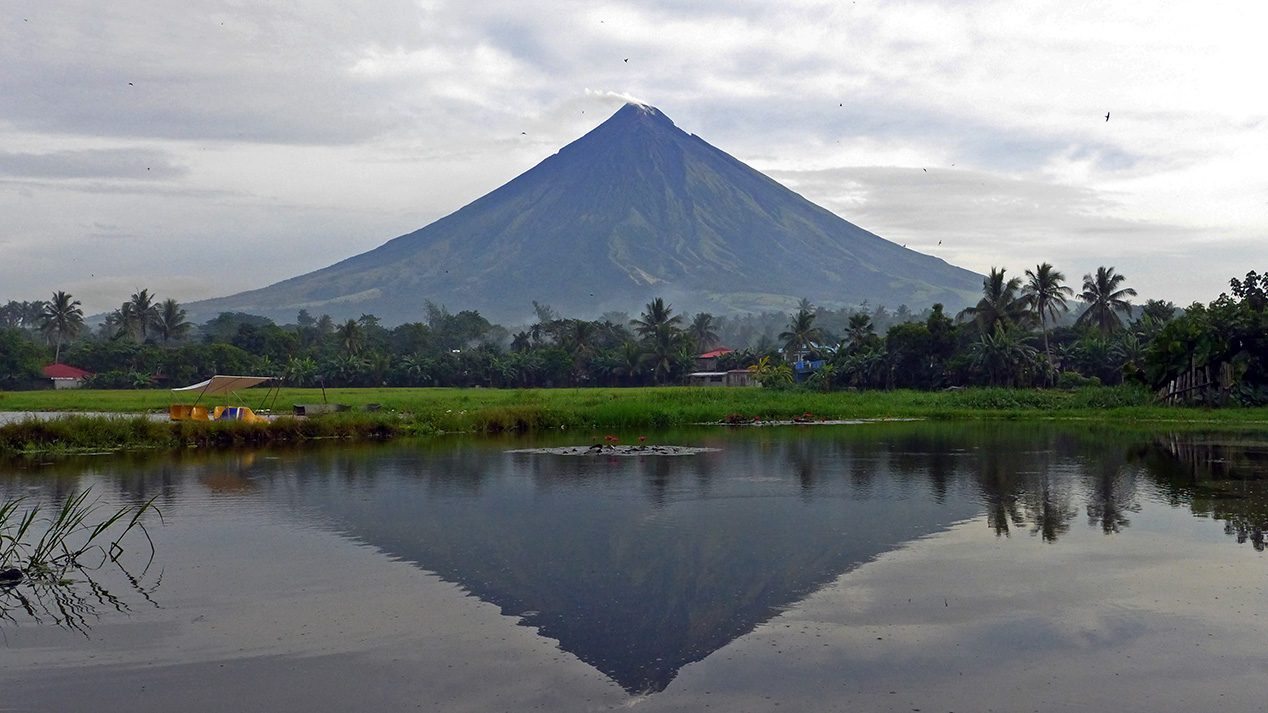SUMMARY
This is AI generated summarization, which may have errors. For context, always refer to the full article.

MANILA, Philippines – The Philippine Institute of Volcanology and Seismology (Phivolcs) on Tuesday morning, March 6, said it has lowered the status of the Mayon volcano from Alert Level 4 to Alert Level 3.
“Mayon volcano’s condition in the past week has been characterized by a general decline in unrest reflected by moderate seismicity and degassing, deflation of the edifice and a decrease in eruptive activity at the summit crater,” Phivolcs said in its Tuesday, 8 am bulletin.
Notice for the lowering of Mayon Volcano’s status from Alert Level 4 to Alert Level 3. pic.twitter.com/GtfwdMN3wv
— PHIVOLCS-DOST (@phivolcs_dost) March 6, 2018
What Alert Level 3 means: Phivolcs said it lowered Mayon’s alert status to reflect the “overall decrease in the level of unrest.”
While Alert Level 3 means there is “decreased tendency towards hazardous explosive eruption,” Phivolcs warned against interpreting this to mean that unrest has ceased.
“The volcano can be expected to continue generating volcanic earthquakes, magmatic gas output and weak surface processes such as sporadic degassing and lava effusion events, steam-driven explosions, rockfall and PDCs (pyroclastic density currents), while shallow remnant magma rests within the edifice,” the agency warned.
Phivolcs said Mayon’s status alert may be raised back to Alert Level 4 “should the potential for hazardous explosive eruption be forewarned by an uptrend or pronounced change in monitoring parameters.”
What can happen during Alert Level 3: Sudden explosions, lava collapses, PDCs and ashfall can still occur and threaten areas in the upper to middle slopes of Mayon, according to Phivolcs.
It recommended that entry be strictly prohibited within the 6-kilometer-radius Permanent Danger Zone and the precautionary 7-kilometer-radius Extended Danger Zone in the south-southwest to east-northeast sector, stretching from Anoling, Camalig, to Sta Misericordia, Sto Domingo.
Phivolcs also advised people residing close to these danger areas to observe precautions associated with rockfalls, PDCs, and ashfall.
“Active river channels and those perennially identified as lahar-prone areas in the southern and eastern sectors should also be avoided especially during bad weather conditions or when there is heavy and prolonged rainfall. Civil aviation authorities must advise pilots to avoid flying close to the volcano’s summit as airborne ash and ballistic fragments from sudden explosions and PDCs may pose hazards to aircraft,” the agency added.
Phivolcs placed the Mayon volcano under Alert Level 4 in January. – Rappler.com
Add a comment
How does this make you feel?
There are no comments yet. Add your comment to start the conversation.